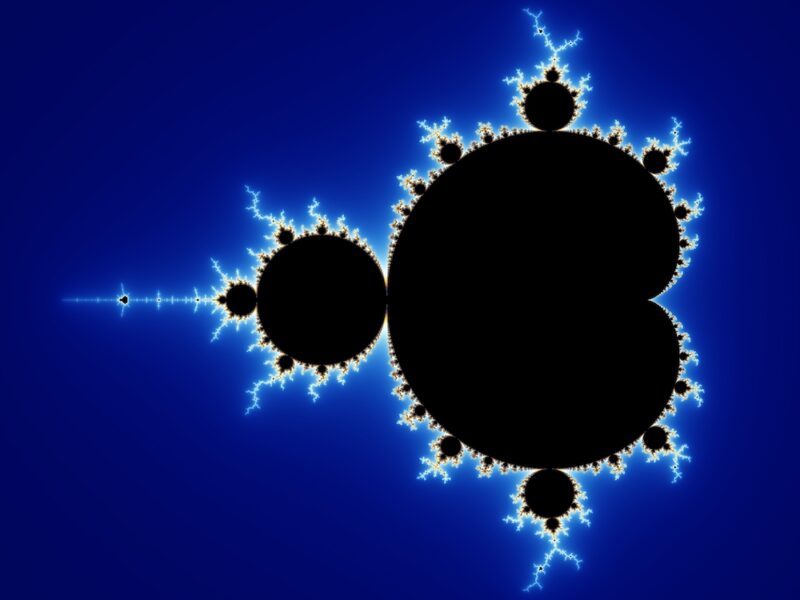The Mandelbrot Set: A Mathematical Marvel of Infinite Complexity
The Mandelbrot set is one of the most captivating and enigmatic objects in mathematics. Named after the Polish-born French-American mathematician Benoit Mandelbrot, this fractal set has fascinated mathematicians, scientists, and artists alike since its discovery in the 1970s. At its core, the Mandelbrot set is a collection of complex numbers that exhibit remarkable properties when subjected to a simple iterative process.
The Mathematical Foundation
The Mandelbrot set is defined in the complex plane by a deceptively simple quadratic equation:
$$f_c(z) = z^2 + c$$
where z and c are complex numbers. The set consists of all complex numbers c for which the function f_c(z) does not diverge to infinity when iterated from z = 0[1]. In other words, a complex number c is part of the Mandelbrot set if, when starting with z0 = 0 and applying the iteration repeatedly, the absolute value of zn remains bounded for all n > 0.
When plotted on a complex plane, the Mandelbrot set reveals its true beauty. The set forms a distinctive cardioid shape with an intricate boundary, often referred to as the “apple” or “heart” of the set. Surrounding this main body are smaller bulbs and tendrils that extend outward, creating a mesmerizing fractal pattern.
The visual representation of the Mandelbrot set is typically created using computer algorithms. Points within the set are usually colored black, while points outside the set are assigned colors based on how quickly they diverge to infinity when the iterative process is applied.
One of the most fascinating aspects of the Mandelbrot set is its fractal nature. As you zoom in on any part of the set’s boundary, you encounter an infinite level of detail and self-similarity. This means that smaller versions of the entire set can be found within its structure, creating a never-ending cascade of patterns and shapes.
The Mandelbrot set is intimately connected to another class of fractals known as Julia sets. Each point c in the complex plane corresponds to a unique Julia set. The Mandelbrot set can be thought of as a map of Julia sets, where points inside the Mandelbrot set correspond to connected Julia sets, while points outside correspond to disconnected Julia sets.
Although the mathematical foundations for the Mandelbrot set were laid earlier, it was Benoit Mandelbrot who first visualized it using computer graphics in 1980. This visualization was a breakthrough in the field of complex dynamics and played a crucial role in popularizing fractals.
While the Mandelbrot set itself may not have direct practical applications, its study has led to significant advancements in various fields:
- Chaos Theory: The Mandelbrot set is a prime example of how simple rules can lead to complex, chaotic behavior.
- Computer Graphics: The set has inspired new techniques in computer-generated imagery and art.
- Data Compression: Fractal compression algorithms have been developed based on the self-similarity properties observed in the Mandelbrot set.
- Natural Sciences: The fractal nature of the Mandelbrot set has been used to model various natural phenomena, from coastlines to galaxy distributions.
The Mandelbrot set possesses several intriguing mathematical properties:
- Connectedness: The Mandelbrot set is connected, meaning it consists of a single piece.
- Boundary Complexity: The boundary of the set has an infinitely complex structure, with a Hausdorff dimension estimated to be 2.
- Cardioid and Bulbs: The main cardioid of the set represents the region where the iteration has a single attractive fixed point, while the circular bulbs represent regions with attractive periodic orbits.
Modern computer technology has enabled unprecedented exploration of the Mandelbrot set. High-resolution images and deep zooms have revealed intricate structures and patterns that continue to amaze mathematicians and enthusiasts alike. Software tools allow users to navigate the set, zooming in to explore its infinite complexity.
Despite decades of study, the Mandelbrot set continues to be an active area of mathematical research.










